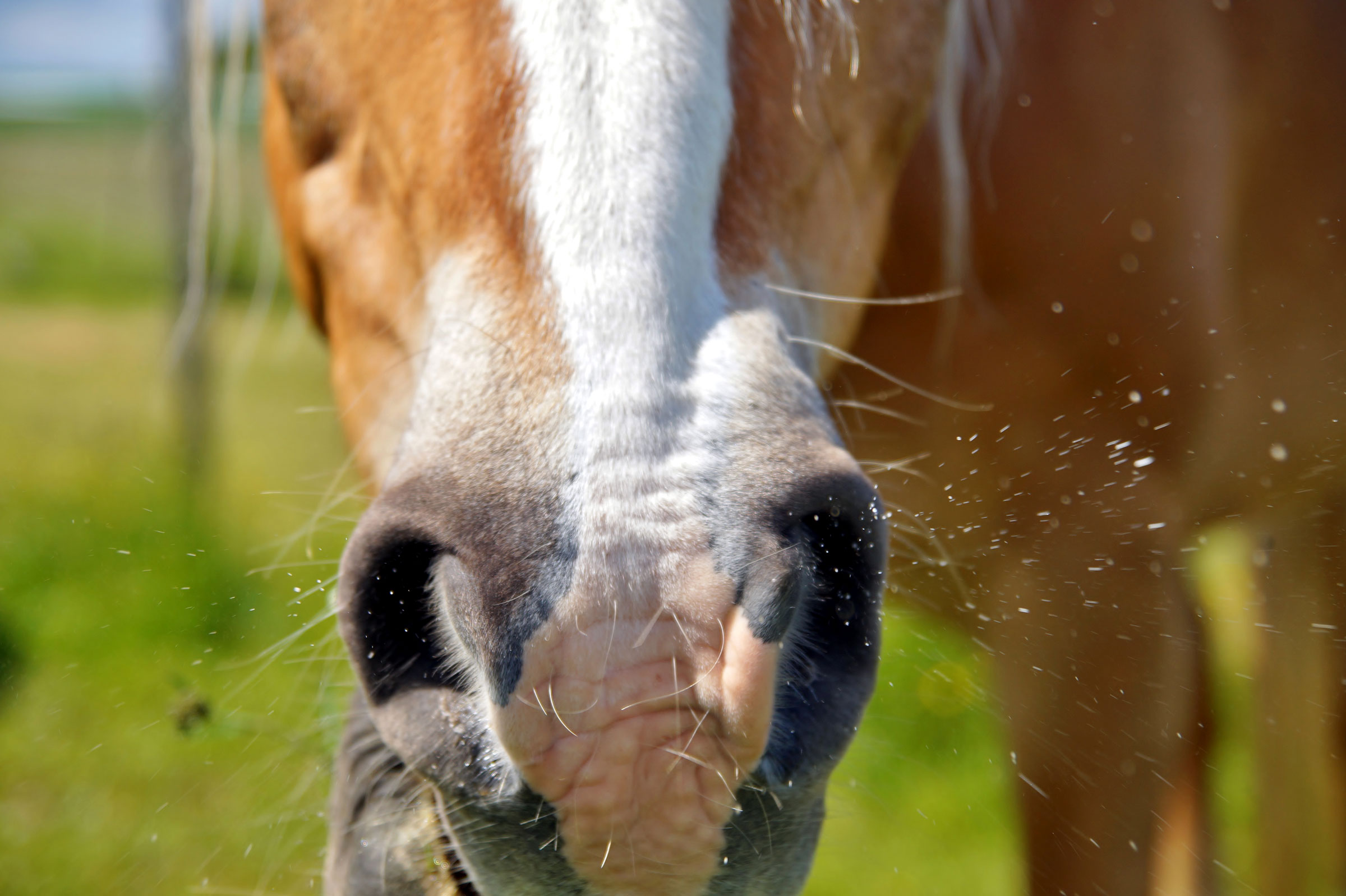
Equine influenza virus (EIV) is a highly infectious respiratory virus that can cause high rates of sickness within an equine population. This especially impacts horses that congregate in large groups at events or on the farm. In years past, most EIV cases typically occurred in young horses less than five years old, but now more horses in the 6-10 year and 11-15-year-old range are infected.
Links in articles are part of an Amazon Affiliate program that provides income to support this brand. Links are chosen by our editors.
Horses infected with equine influenza virus are contagious even before showing clinical signs of fever, cough or nasal discharge. Transmission is amplified by aerosolized droplets expelled by coughing that can expose horses up to 165 feet away. To protect against exposure, a coughing horse should be isolated at a distance of at least 100 yards (300 feet). Some horses, as non-sick carriers, may shed influenza without ever exhibiting clinical signs. Fomites (objects or materials that are likely to carry infection, such as hands, clothing, tack, equipment) are also notorious for transmission of disease. With this in mind, containment measures should include diligent biosecurity strategies both on and off the farm.
Equine business owners can create an Amazon Business Account.
Even when clinical signs of EIV abate relatively quickly, full recovery can take at least 2-3 weeks before the horse is able to return to work. It is recommended that a horse recovering from EIV is rested for a week for every day of fever. It takes at least three weeks for the respiratory epithelium to heal following a bout of influenza.
Besides implementing practical and effective immunization protocols against EIV, farm management and biosecurity practices greatly impact the occurrence and extent of an outbreak.
AAEP Guidelines for Equine Influenza Vaccination
The following is from AAEP.org.
There are two types of equine influenza virus vaccine currently marketed:
- Inactivated (killed) vaccines for intramuscular administration
- Modified-live vaccine for intranasal administration
Following are AAEP recommendations for vaccination schedules.
Adult horses previously vaccinated against influenza: Revaccinate annually. Horses at increased risk of exposure may be revaccinated every 6 months. Some facilities and competitions may require vaccination within the previous 6 months to enter. USEF has a specific rule requiring influenza vaccination; see USEF Vaccination Rule.
Adult horses previously unvaccinated against influenza or of unknown vaccine history:
- Inactivated vaccine: Dependent upon on manufacturer’s product recommendation, the vaccine may be a two or three dose series with a 3 to 4-week interval between doses (IM injection).
- Modified live vaccine: Administer a single dose (IN application).
- Revaccinate annually.
Pregnant mares, previously vaccinated against influenza: Inactivated vaccine: Annually with one dose administered 4-6 weeks pre-partum
Pregnant mares, unvaccinated or having unknown vaccine history: Inactivated vaccine: Dependent upon on manufacturer’s product recommendation, the vaccine may be a two or three dose series with a 3 to 4-week interval between doses (IM), with the last dose administered 4-6 weeks pre-partum.
Foals of mares vaccinated against influenza in the pre-partum period:
- Inactivated vaccine: Dependent upon on manufacturer’s product recommendation, the vaccine may be a two or three dose series with a 3 to 4-week interval between doses (IM).
- Modified Live vaccine: Administer a single dose (IN) in foals 11 months of age or older
Foals of mares previously unvaccinated against influenza or having unknown vaccine history in the pre-partum period: Inactivated vaccine: Dependent upon on manufacturer’s product recommendation, the vaccine may be a two or three dose series with a 3 to 4- week interval between doses (IM) starting at 4-6 months of age.
Other Considerations
Outbreak Mitigation: Vaccination to boost immunity in the face of an outbreak may be a valuable strategy if the outbreak is detected early enough. Previously vaccinated horses may be revaccinated, particularly if the previous vaccine was administered more than 3 months prior. In unvaccinated horses, or horses with an unknown vaccination history, the early onset of immunity after administration of the intranasal product may be recommended for use. Unpublished evidence indicates onset of immunity is 7 days post administration of the intranasal vaccine.
Horses having been naturally infected and recovered: Horses with a history of influenza infection and disease are likely to have immunity to the specific strain for more than 1 year, but booster vaccination is recommended 6 months after disease occurrence due to variations in the influenza strain.
Sign up now for Amazon Prime 30-day Free Trials, a membership program that offers special benefits including: Instantly watch thousands of movies and TV episodes; Borrow Kindle books; Get unlimited FREE two-day shipping (no minimum order size). Learn more.


